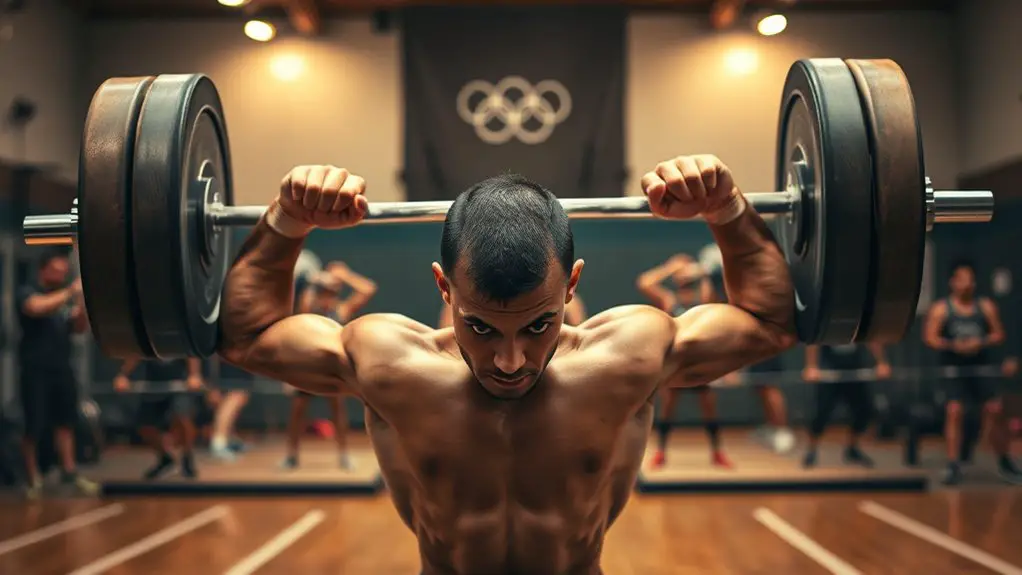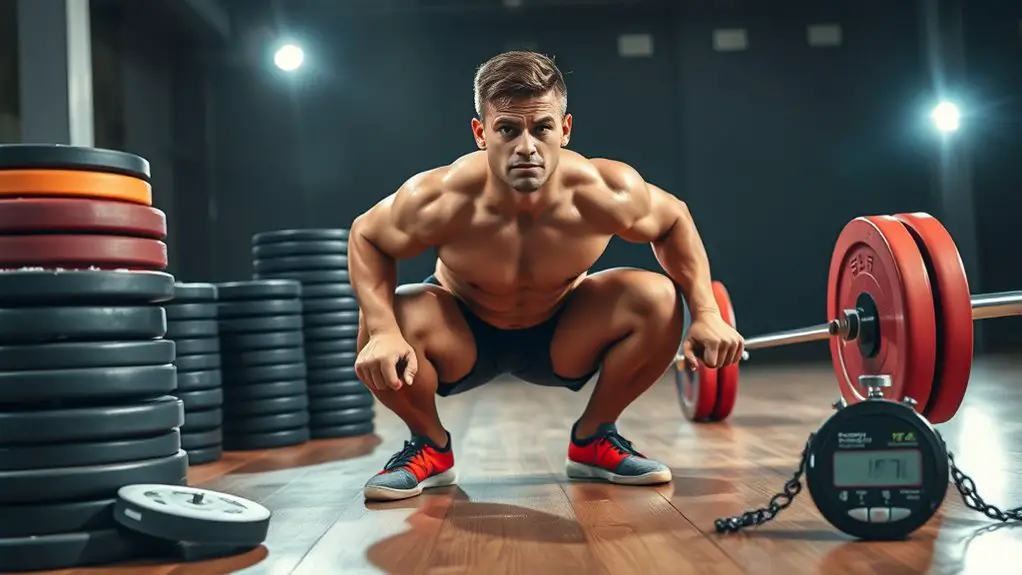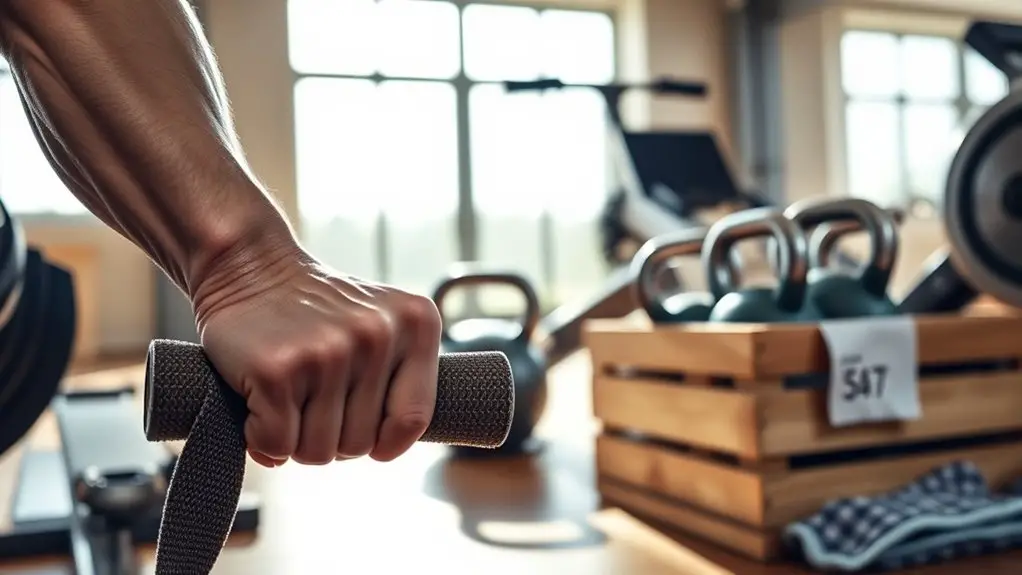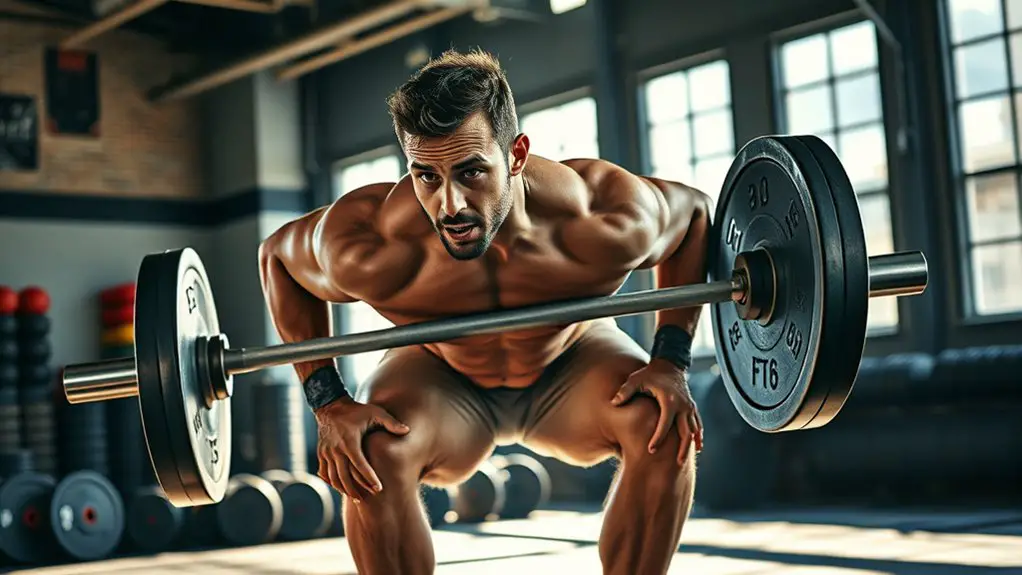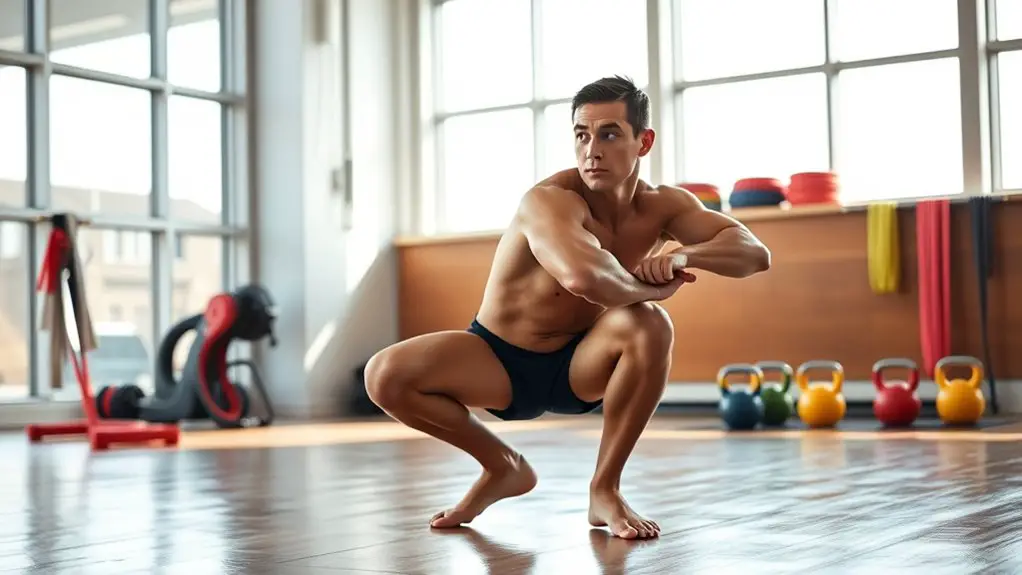Olympic lifts are fundamental for athletes because they build explosive power and increase overall strength. These lifts improve coordination, balance, and flexibility, which are vital for peak performance in sports. Plus, they enhance body awareness and reduce the risk of injuries through proper technique. Incorporating Olympic lifts into your training regimen can transform your athletic capabilities. Discover how you can further enhance your training and achieve ideal performance in your sport.
The Benefits of Olympic Lifting for Athletic Performance
When you incorporate Olympic lifting into your training regimen, you're not just building strength; you're enhancing your overall athletic performance. These lifts promote mechanical efficiency, allowing your body to move smoothly and effectively during other activities. Think about it—when you master the snatch or clean and jerk, you're training your muscles to work together in a way that translates directly to your sport.
This sport specificity means that the skills you develop in Olympic lifting can improve your agility, balance, and coordination, essential traits for any athlete. It's not just about power; it's about how efficiently you can apply that power in your chosen sport. By focusing on these lifts, you're not only enhancing your physical capabilities but also embracing a freedom that comes with being a well-rounded athlete. Additionally, increased strength from Olympic lifting is crucial for developing fast-twitch muscle fibers, which contribute to your explosiveness. So, let Olympic lifting elevate your performance and release your potential on the field, court, or track.
Enhancing Explosive Power and Strength
Olympic lifting is a powerful tool for enhancing explosive power and strength, both of which are essential for athletic success. By incorporating movements like the clean and jerk or snatch, you can dramatically boost your power generation. These lifts require rapid force production, training your muscles to contract quickly and efficiently, which translates to improved performance in your sport.
Moreover, Olympic lifts contribute considerably to strength development. As you lift heavier weights, you're not just building muscle; you're also fortifying your central nervous system, allowing for better overall strength gains. This combination of explosive power and strength creates a solid foundation for any athlete, enabling you to perform at your best. Additionally, mastering proper technique is crucial for maximizing the benefits of these lifts while minimizing the risk of injury.
Improving Coordination and Balance
When you practice Olympic lifts, you're not just building strength; you're also enhancing your body awareness and coordination. These lifts require dynamic movement patterns that engage your core and improve balance. As you refine your technique, you'll notice a significant boost in your overall stability and athletic performance. Additionally, a strong core reduces injury risk by supporting the spine during exertion, allowing you to train more effectively and safely.
Enhanced Body Awareness
While many athletes focus on strength and speed, enhancing body awareness through Olympic lifts can greatly improve coordination and balance. These lifts require a keen sense of proprioceptive training, allowing you to understand your body's position and movement in space. As you refine your technique, you'll notice improved stability and agility, essential for any sport.
| Aspect | Benefit |
|---|---|
| Body Awareness | Better movement control |
| Proprioceptive Training | Enhanced spatial awareness |
| Coordination | Improved timing |
| Balance | Greater stability |
| Overall Performance | Increased athletic ability |
Embracing Olympic lifts not only strengthens your body but also elevates your mind-body connection, leading to more freedom in your movement and performance.
Dynamic Movement Patterns
Dynamic movement patterns are essential for athletes looking to enhance coordination and balance, as they mimic the complex movements required in various sports. By incorporating Olympic lifts into your training, you're not just lifting weights; you're engaging in dynamic sequencing that promotes fluidity in your movements. This practice improves movement efficiency, allowing you to perform at your best while reducing the risk of injury. As you develop these dynamic patterns, you'll notice that your body becomes more attuned to rapid changes in direction and force application. This heightened awareness translates directly to better performance on the field or court. Embrace the freedom that comes with mastering these lifts, and watch your coordination and balance reach new heights.
Core Stability Activation
Core stability is essential for enhancing coordination and balance, as it forms the foundation for efficient movement. When you engage your core through stability training, you're not just strengthening your midsection; you're revealing your body's potential. Here's how core engagement can help you:
- Improved athletic performance: A stable core supports better movement patterns, allowing for greater power and agility.
- Injury prevention: A strong core stabilizes your body, reducing the risk of injuries during dynamic activities.
- Enhanced balance: With a well-engaged core, you'll find it easier to maintain your balance, whether you're lifting, sprinting, or jumping.
Increasing Flexibility and Mobility
To perform Olympic lifts effectively, you need to focus on increasing your flexibility and mobility. This not only enhances your range of motion but also improves joint stability, allowing for better performance and reduced injury risk. By prioritizing these aspects, you'll set a strong foundation for your lifting technique. Incorporating mobility training into your routine will further enhance your overall athletic performance and help prevent injuries.
Enhanced Range of Motion
While many athletes focus on strength and power, enhancing your range of motion is equally essential for peak performance. Olympic lifts are fantastic for this, as they promote better flexibility and mobility through dynamic movements that engage various joint angles. You'll experience increased muscle activation, allowing you to move freely and efficiently.
Here are some benefits of enhancing your range of motion:
- Improved athletic performance: Greater flexibility leads to better mechanics in your sport.
- Reduced injury risk: A full range of motion helps protect your muscles and joints.
- Enhanced recovery: Stretching and mobility work can speed up healing and reduce soreness.
Embrace Olympic lifts to release your body's true potential and enjoy the freedom of movement!
Joint Stability Improvement
As you focus on Olympic lifts, you'll find that they greatly enhance joint stability, which is essential for overall athletic performance. These lifts require precise joint alignment, promoting better movement patterns and reducing the risk of injury. When you engage in stability training through Olympic lifts, you're not just strengthening your muscles; you're also improving the mobility of your joints. This combination allows you to move more freely and efficiently in your sport. Increased joint stability translates to better control during dynamic movements, giving you the freedom to perform at your best. So, embrace the challenge of Olympic lifts to enhance your athletic capabilities and enjoy the benefits of improved joint stability and flexibility.
Injury Prevention Through Proper Technique
Proper technique is essential for injury prevention in Olympic lifts, since even minor errors can lead to significant strain on your joints and muscles. By focusing on technique mastery, you can build injury resilience and lift confidently. Here's how proper form can keep you safe:
Proper technique is vital for injury prevention in Olympic lifts, ensuring joint safety and building confidence in your lifting journey.
- Alignment: Maintaining the right body posture guarantees your joints and muscles work harmoniously, reducing the risk of injury.
- Controlled Movement: Smooth, intentional lifts help you avoid jerky motions that can cause strains or tears.
- Strength Development: Proper technique enhances your strength gains, allowing you to lift more effectively without overloading your body.
In addition, prioritizing well-being through proper warm-ups and stretching can further minimize injury risks during your lifting sessions. When you prioritize these aspects, you're not just lifting weights; you're forging a path to freedom in your athletic pursuits. Embrace the journey of mastering your technique, and you'll find yourself not only lifting better but also feeling stronger and more resilient.
Incorporating Olympic Lifts Into Training Regimens
Incorporating Olympic lifts into your training regimen can considerably enhance your athletic performance, provided you approach them with the right mindset and technique. Start by customizing your program to fit your specific sport and goals. Olympic lifts, like the clean and jerk or snatch, require explosive power, so it's essential to balance these lifts with your other training elements. Aim for a training frequency that allows you to master the lifts without overtraining. This might mean two to three sessions a week dedicated to Olympic lifts, integrated with strength and conditioning work. Always prioritize form over weight; it's better to lift lighter with proper technique than to risk injury by going heavy too soon. As you progress, gradually increase the intensity. By embracing this structured yet flexible approach, you'll reveal the full potential of Olympic lifts and elevate your athletic performance. Additionally, incorporating multiple muscle groups in your Olympic lifting routine can lead to improved overall strength and power.
Frequently Asked Questions
What Equipment Is Needed for Olympic Lifting?
For Olympic lifting, you'll need a few key pieces of equipment. Start with barbell types designed for Olympic lifts; look for a standard Olympic barbell that's 20 kg for men and 15 kg for women. You'll also need weight plates to add resistance; bumper plates are a great choice since they're durable and ideal for dropping. Having a squat rack or lifting platform can also enhance your experience and safety while training.
How Often Should Athletes Practice Olympic Lifts?
You know that feeling when you're flying high after a great lift? To keep that momentum, you should aim for 2 to 4 sessions per week, depending on your lifting frequency and training volume. It's essential to find your sweet spot, balancing intensity and recovery. Listen to your body; if you're feeling drained, don't hesitate to adjust. Embrace the freedom of lifting to build strength and power that'll elevate your performance!
Are Olympic Lifts Suitable for Beginners?
Absolutely, Olympic lifts can be suitable for beginners, but it's essential you focus on proper beginner techniques first. Start with lighter weights and master the form to avoid injuries. Safety considerations are key; always prioritize your technique over the amount you lift. It's about building a solid foundation and gaining confidence. Once you feel comfortable, you can gradually increase the weight and complexity of the lifts, enjoying the freedom of movement they provide.
Can Olympic Lifting Be Used for Weight Loss?
Think of Olympic lifting as a powerful engine revving up your metabolism. It's not just about lifting weights; it's an exhilarating way to torch calories while building strength. When you incorporate these lifts into your routine, you're not only increasing your caloric burn but also enhancing your overall fitness. If you're looking for a dynamic method to shed pounds and gain freedom in your movements, Olympic lifting could be your perfect solution.
What Are Common Mistakes to Avoid in Olympic Lifting?
When you're Olympic lifting, avoiding common mistakes is essential for both safety and effectiveness. Watch out for technique errors, like improper grip or not keeping the bar close to your body. These can hinder your progress and lead to injury. Additionally, mobility issues can restrict your range of motion, making lifts less efficient. Focus on improving your flexibility and refining your form, so you can lift freely and confidently.
